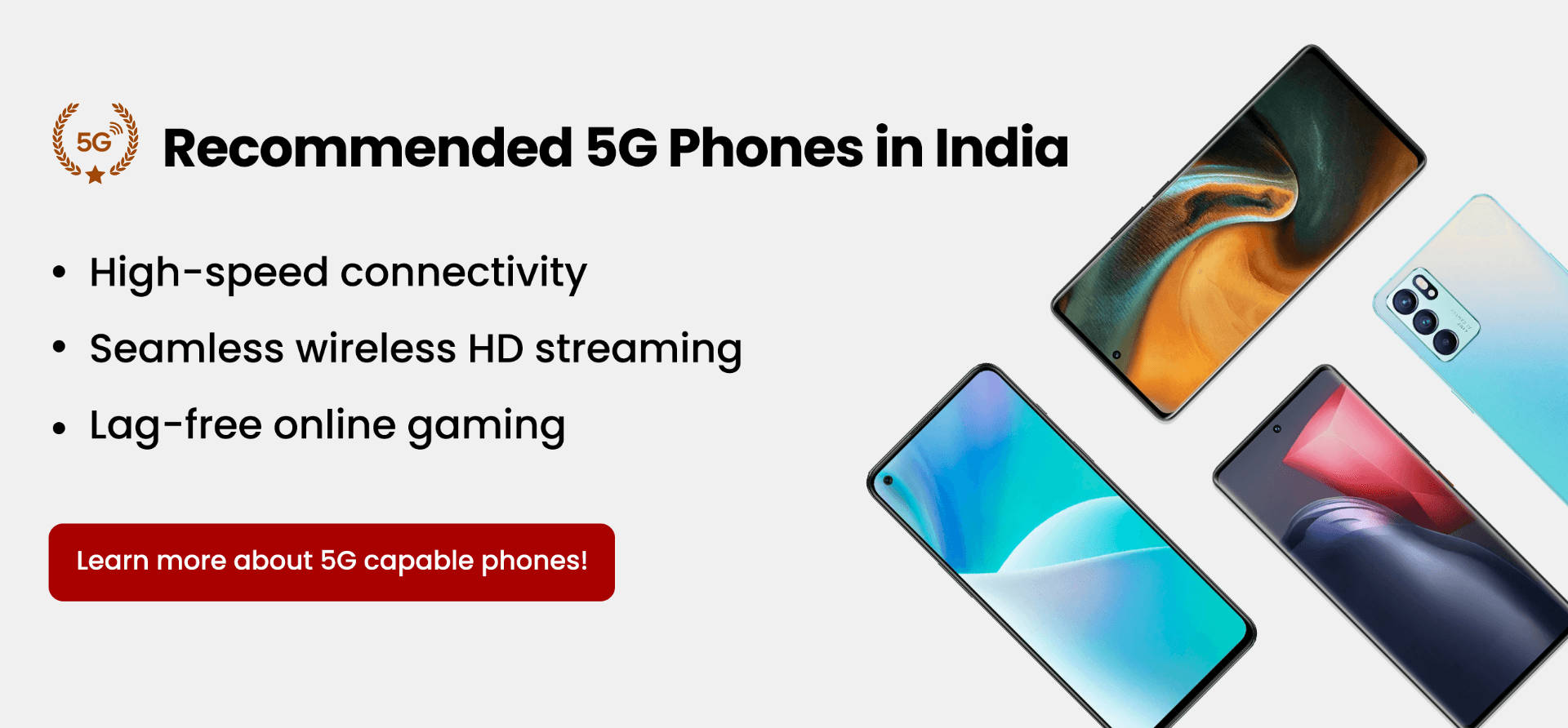Review Summary
Expert Rating
Since its debut in the country, iQOO has taken the Indian smartphone space by storm and the company’s offerings often push the boundaries in the performance department. The iQOO 9 series, for instance, was backed by flagship-grade Snapdragon chipsets, making them a godsend for gamers and performance enthusiasts. Rest assured, iQOO is reining in spec-heads left, right and centre and the company hopes to sway even more buyers to its doorsteps with the iQOO 9T. Armed with Qualcomm’s Snapdragon 8+ Gen 1 SoC, the iQOO 9T has all the makings of a snappy Android phone. So, in this review, let’s take a closer look at the device and see if it is truly worth its MRP of Rs 49,999 in India.
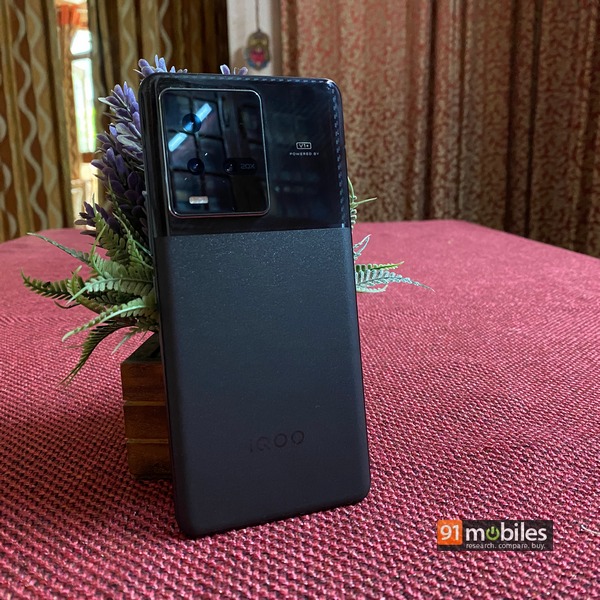
Verdict
In terms of sheer performance, there is no catching up to the iQOO 9T. Add great daylight photography to the mix, along with a fluid 120Hz E5 AMOLED panel, 120W fast wired charging, and good-sounding stereo speakers and you’ll find it hard to turn a blinds eye on iQOO’s latest flagship.
Table of Contents
Design and display
The iQOO 9T impresses in the aesthetics department and the device borrows a few design elements from the iQOO 9 and the iQOO 9 Pro launched a while ago. I was sent the Alpha colourway for review, which skillfully partitions the handset’s two-toned finish comprising a glossy back carbon fiber gradient and a matte black, sandstone-esque texture. The phone is extremely well built too, although the device is a bit on the heavier side and weighs 206 grams. The handset’s heft can be accredited to a sizeable vapour chamber that ensures the smartphone’s temps don’t spike erratically under load, along with its chunky 4,700mAh battery. Even so, the subtle curvature on the back panel makes it easier to grip the phone.
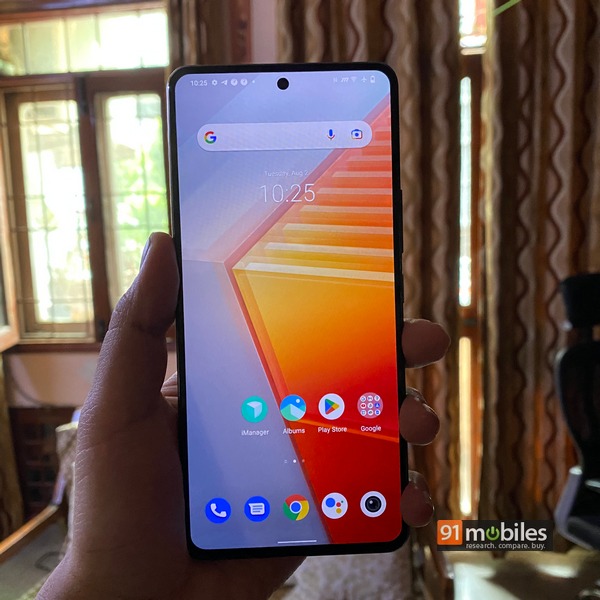
As for the placement of the I/O, the device features a volume rocker, as well as a textured power button on its right side. The handset ships with a USB Type-C port at the bottom, which is sandwiched between a speaker grille and a SIM tray. Furthermore, the smartphone’s earpiece doubles up as a secondary speaker too, thereby paving the way for a stereo effect when you’re watching movies / TV shows on the fly. Rest assured, the iQOO 9T checks most, if not all of the boxes in the design department. If anything, I would’ve liked to see the phone ship with a higher certification than IP 52 but, given the 9T’s price point, I am willing to overlook the omission.
The iQOO 9T ships with a 6.78-inch, FHD+, E5 AMOLED panel that refreshes at 120Hz. The display is not compliant with LTPO 2.0 tech, but it does use a smart-switch feature that oscillates the refresh rate between 60Hz and 120Hz as and when required. Apart from that, the handset’s E5 AMOLED screen is more energy-efficient than competing devices with Samsung’s E4 displays. The 9T also makes use of the company’s V1+ dedicated display chip that, among other things, increases the frame rate in select Android games and optimises colours too.
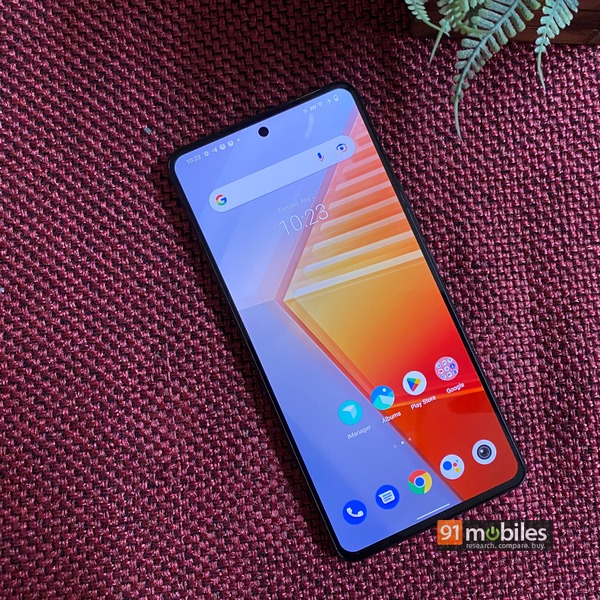
Adding to the list of pros, the iQOO 9T supports HDR10 playback and the device even ships with a Visual Enhancement toggle which can supposedly bring out richer colours in media relayed from YouTube and Netflix. I watched The Grey Man on Netflix and my experience was definitely a bit better with the toggle turned on, but even without it, the iQOO 9T is a splendid media consumption machine. What’s more, with a peak brightness level of 1,000nits (which can ramp up to 1,500 nits for HDR10+ content), sunlight legibility will not pose an issue on the device either. Lastly, the display is bordered by reasonably sleek bezels on all sides and the panel’s nonintrusive punch-hole camera vanishes into the background once you spend some time using the phone. I should also add that the display is quite snappy and the panel’s 360Hz touch sampling rate will surely be appreciated by all the gamers in the audience.
Camera
The iQOO 9T is backed by a triple camera setup comprising a 50MP Samsung ISOCELL GN5 sensor with OIS which works alongside a 13MP ultra-wide shooter and a 12MP portrait lens. As far as images from the main sensor go, the photos offer ample detailing and sharpness levels, albeit exhibit slightly saturated colours. That said, the camera offers an adequate dynamic range as well as good exposure calibration, thereby ensuring the device doesn’t crush the details in the brighter parts of the frame. I’d also like to add that the camera is quick to focus on the subject and the sensor’s shutter speed is rapid too.
While pixel-binned 12.5MP images are the default choice for capturing a still, you can amp up the resolution to 50MP to further crop into a shot. On the flip side, the phone’s low-light photography chops could do with some fine-tuning. To wit, the device overturns an oversharpened image after the sun has set. While the image offers minimal noise, the overall output appears extremely processed and edited. The handset struggles to squeeze details from the shadows too, and exposes the scene poorly at times, thereby robbing the composition of its natural look. Thankfully, the dedicated Night mode utility does a fairly decent job of bringing in details but the colours still appear a bit too muted for my liking.

Towards the front, the iQOO 9T ships with a 16MP selfie camera which clicks good-looking portraits with accurate colours albeit tends to oversharpen the subject’s facial details. Lastly, for video recording purposes, the phone can shoot clips in up to 4K resolution at 60FPS. That said, the device caps the resolution to Full HD if you toggle the smartphone’s ultra stabilisation feature.
Performance and software
The iQOO 9T is among the rare breed of Android phones to be backed by Qualcomm’s Snapdragon 8+ Gen 1 SoC. In fact, barring the new ROG Phone series, the device is only the second phone in the country to be backed by the chipset. For the uninitiated, the newer SoC is a slightly overclocked version of the original 8 Gen 1 CPU and this time around, the platform’s ultra Cortex X2 core is clocked at 3.2GHz instead of 3GHz. Interestingly, the Snapdragon 8 Gen 1 SoC was plagued by thermal throttling issues and more often than not, devices backed by the chipset would throttle by quite some margin under a sustained load. On the upside, having spent some time with the iQOO 9T, I have concluded that, at the very least, the handset’s 8+ Gen 1 chipset is more adept at sustaining its peak performance under strenuous workloads.
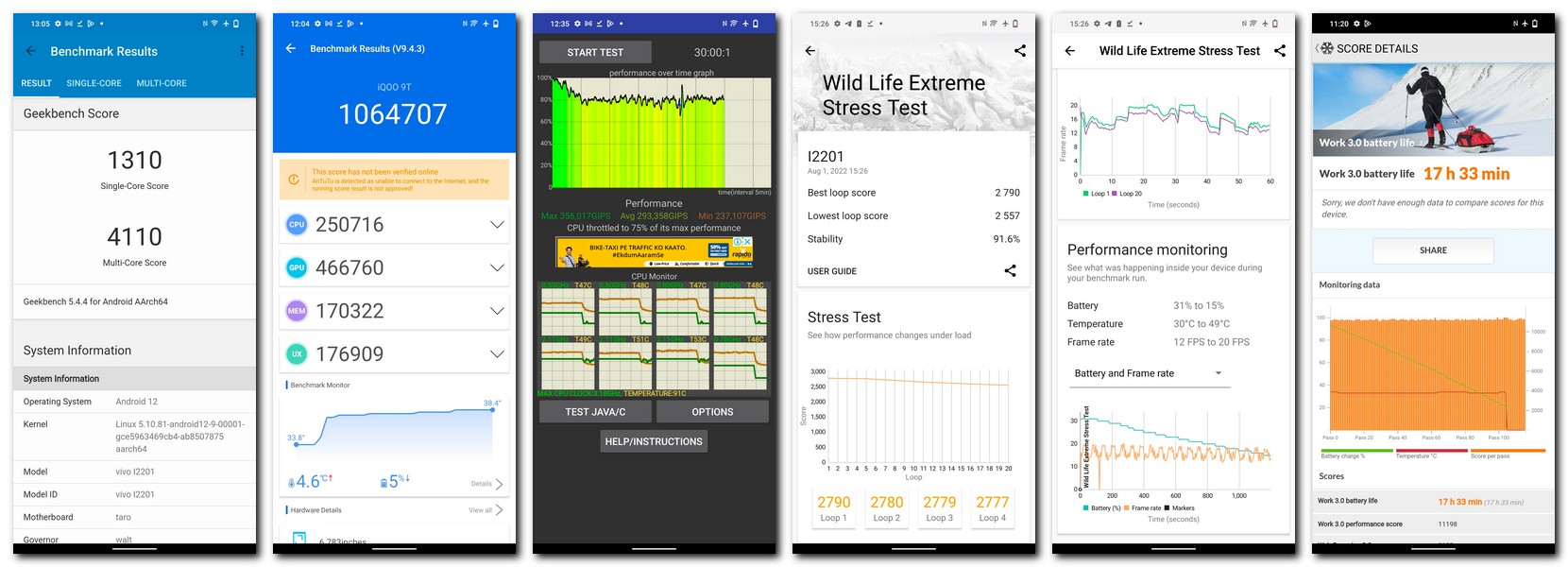
In the CPU Throttle benchmark, the 9T throttled to just 75 percent of its maximum throughput after a 30-minute run. Similarly, on 3DMark’s Wild Life Extreme Stress test, the device overturned a healthy 91.6 percent stability score. Both these figures are higher than the 8 Gen 1 devices, which leads me to believe that Qualcomm has in fact optimised power usage across the newer chipset. Be that as it may, even the phone’s large vapour cooling chamber struggles to keep the temps in check. In fact, in 3DMark’s Extreme Stress test run, the phone’s temperatures shot up by 19 degrees by the time the test was concluded.
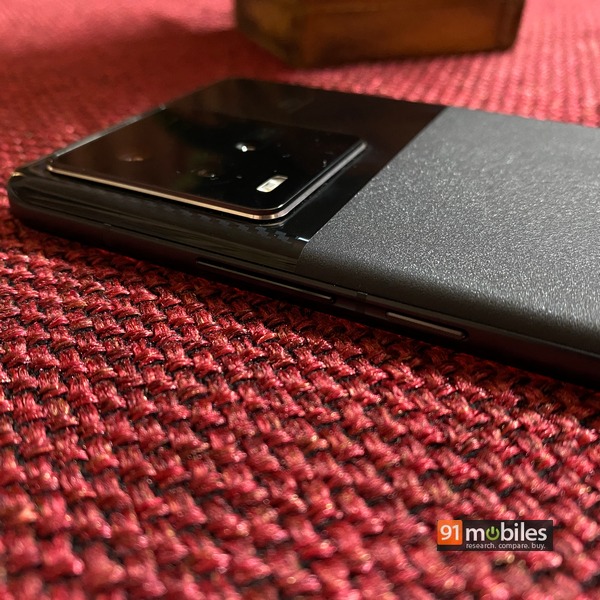
Apart from that, on Antutu the iQOO 9T pushes past the 1,000,000 score mark while on Geekbench 5 the multi-core result is 4,110. Long story short, the device is going to breeze through any performance-related task without a hitch. The same is true for gaming as well, with BGMI (the official apk is still available for download) running at Extreme (60fps) frame rate at HDR graphics. iQOO has also optimised the instant touch response rate for both CoD Mobile and BGMI to 1,200Hz, which is great.
Talking a bit about haptics, the 9T ships with a Dual X-axis linear motor which offers better feedback than some competing devices when playing games or typing on the set. You can also leverage the device’s In-Display Dual Monster touch control scheme, which allows users to map in-game toggles to the left and right sides of the screen. Apart from that, the phone has up to 12GB of LPDDR5 memory, which can be extended by 4GB using virtual RAM, and up to 256GB of UFS 3.1 storage.
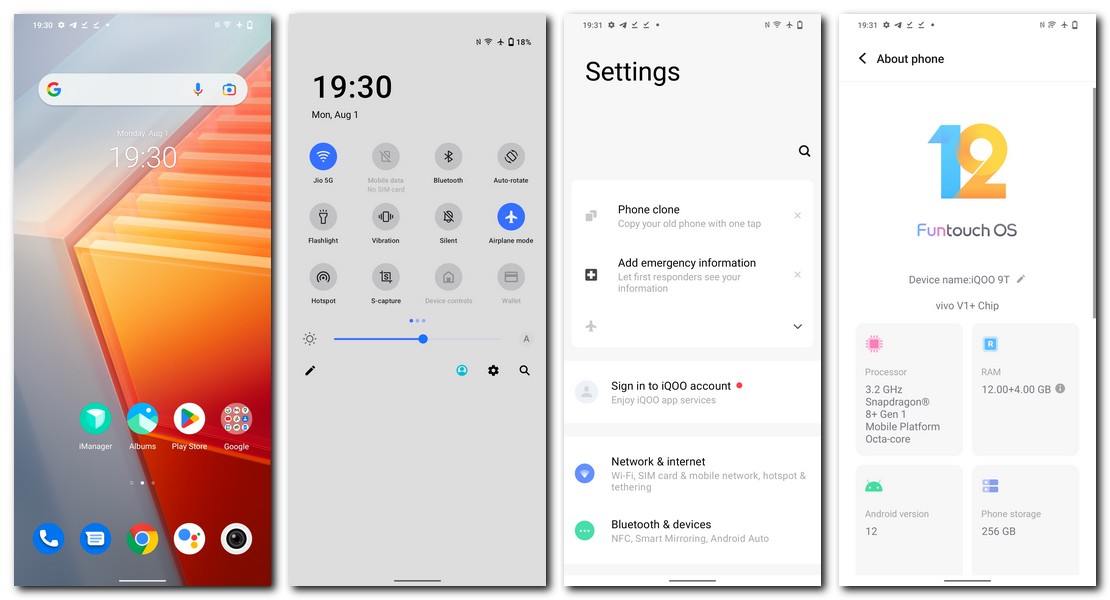
Other aspects of the device include a stereo speaker setup which sounds great. There is an in-display fingerprint sensor as well which has snappy authentication. 5G services can work on the iQOO 9T provided India’s telecom infrastructure can play catchup. On the bright side, I was quite happy with the 4G LTE speeds available on Noida’s Jio network, while the earphone and microphone worked as expected. The phone operates on Vivo’s FunTouchOS 12 which is based on Android 12. You can read more about the software implementation in our review of the iQOO 9 Pro. There are the familiar issues of bloatware plaguing the device but you can uninstall most of the pre-loaded apps from the phone. iQOO is also guaranteeing at least three years of security updates and two years of Android updates with the device.
Battery
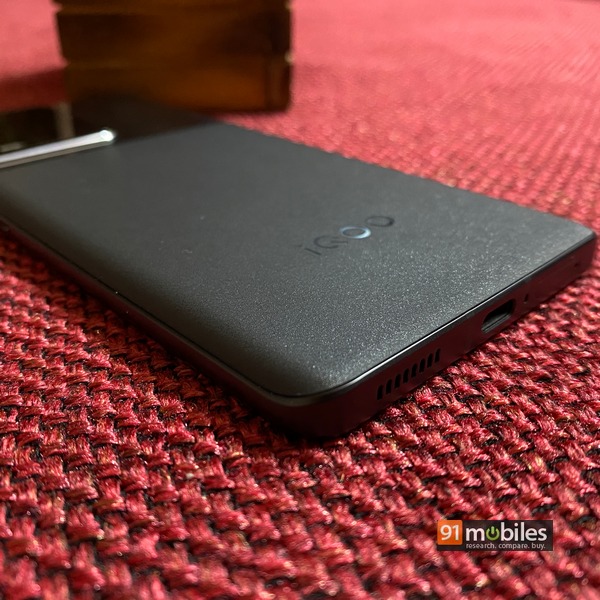
The iQOO 9T is fuelled by a 4,700mAh battery that can be charged at 120W. I regularly got around six hours or more of screen-on time and that’s with the display’s refresh rate set to 120Hz. For anyone curious, my usage comprised watching shows on OTT platforms, playing a couple of games of BGMI and browsing various social media handles. Unsurprisingly, the device net a stellar score in PCMark’s Battery test run too, wherein, the handset kept the lights on for 17 hours 33 minutes. If that isn’t enough, the phone tops up completely in less than 25 minutes with its 120W charging adapter, which is great.
Final verdict

The iQOO 9T is currently the fastest phone as far as benchmarks go, dethroning the Vivo X80 and its Dimensity 9000 SoC. It also appears that some of the thermal throttling issues that plagued 8 Gen 1 devices have seemingly been resolved with the 8+ Gen 1 chipset. That being said, the device still has its work cut out as far as low-light photography goes and the smartphone’s software is still laden with bloatware. Even so, the phone’s daylight shots are more than satisfactory, as is the viewing experience on the phone’s E5 AMOLED panel. Suffice it to say, the iQOO 9T is the perfect device for spec-heads and the device will not leave you wanting for more in the performance department.
Editor’s rating: 4 / 5
Pros:
- Ultimate performance
- Good daylight photography
- Robust design
- 120W super fast charging
Cons:
- Low light photography can be improved
- Ships with bloatware


